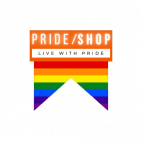Inclusive Guide to LGBTQ+ Websites by Orientation
As our world becomes increasingly interconnected, LGBTQ+ communities are creating welcoming and safe digital spaces to share experiences, seek support, and access relevant information. Orientation-specific websites offer unique virtual havens that celebrate individuality and enable authentic connections. This guide explores best practices for building inclusive, effective websites tailored to the diverse needs of different orientations within the LGBTQ+ community.
Why Inclusive LGBTQ+ Platforms Matter
Orientation-focused LGBTQ+ platforms play a vital role in offering supportive and respectful environments where users can connect and find tailored information. Inclusivity isn’t just about tolerance—it’s about actively celebrating the full spectrum of sexual orientation and gender identities. With the rise of online discrimination, crafting safe, personalized digital spaces isn’t just desirable—it’s essential.
In Brief: Orientation-specific LGBTQ+ websites provide personalized communities and resources, allowing users to connect with others who share similar experiences in a secure and respectful environment.
How to Build an Inclusive LGBTQ+ Website
To truly serve LGBTQ+ communities, websites must follow a core set of principles from the very first stages of design and development.
1. Accessibility and Inclusive Design
Ensure your site is accessible to everyone, regardless of disability or digital literacy level. Best practices include:
- High contrast color schemes for readability
- Alt text for all images to support screen reader use
- A clear, intuitive site structure for seamless navigation
2. Use of Inclusive Language
Welcoming spaces rely on respectful, inclusive language. Avoid assumptions about gender, and instead opt for neutral phrasing. Incorporate names and scenarios that reflect diverse lived experiences, enhancing relatability across orientations and identities.
SEO Strategy for LGBTQ+ Websites
Search engine optimization is crucial for visibility. Understanding and strategically using key terms helps your site connect with its target audience effectively.
1. Keyword Research
Conduct in-depth research into keywords relevant to each orientation and identity. Consider phrases your target audience is likely to use when searching for resources or community spaces. Including related or secondary keywords (semantic LSI terms) can broaden your reach and improve your content’s contextual impact.
2. Natural Integration
Keywords should be seamlessly incorporated into content. Avoid overusing them, as keyword stuffing can negatively affect SEO. Instead, leverage news updates, frequently asked questions, and interactive features like quizzes or polls to keep your content rich and engaging.
Creating Meaningful and Engaging Content
Educational and engaging content lies at the heart of any inclusive website. Aim to inform while encouraging conversation, interaction, and authenticity.
1. Blog Posts and Forums
Share diverse content like legal rights updates, personal narratives, and identity exploration. Interactive forums allow users to exchange stories, ask questions, and build genuine connections, creating a sense of belonging.
2. Webinars and Podcasts
Host webinars and podcasts featuring LGBTQ+ advocates, creators, and professionals. These formats not only offer educational depth but also foster loyal community engagement through direct, relatable storytelling.
Case Studies and Success Stories
Let’s look at real examples of orientation-focused platforms that have succeeded in delivering safe, informative, and empowering online spaces.
1. Gay Men’s Community Sites
Sites catering to gay men often feature dedicated sections on sexual health, relationship advice forums, and local event calendars. Key SEO terms such as “gay health,” “online gay community,” and “safe gay dating” effectively increase visibility.
2. Lesbian-Focused Platforms
Lesbian-oriented sites might include content on parenting, representation in media, and discussion boards. Integrating keywords like “lesbian network,” “lesbian news,” and “lesbian rights” supports discoverability while fostering relevance and connection.
User Engagement and Interactivity
Success in online community-building hinges on a site’s ability to facilitate interaction and user-driven content.
1. Polls and Surveys
Regularly include surveys to gather user feedback and preferences. This ensures your platform evolves with your audience and remains user-first in its content development.
2. Community Discussion Boards
Provide safe spaces for diverse voices and orientations to exchange openly. Forums or live chats strengthen community bonds and encourage repeat engagement.
Security and Privacy Best Practices
Online safety is especially important for marginalized communities. Your site’s credibility relies on robust privacy and moderation practices.
1. Data Protection
Comply with privacy regulations such as the GDPR in Europe. Clearly communicate your data privacy policies and ensure users feel confident about how their information is handled.
2. Content Moderation
Implement effective content moderation strategies to prevent abuse and hate speech. Use moderation tools and active community managers to maintain a positive, respectful environment.
Towards a More Inclusive Future
As the digital landscape evolves, LGBTQ+ websites tailored by orientation must stay responsive to the changing needs of their communities. By integrating inclusive design, meaningful content, user-focused features, and strong safety protocols, these platforms can continue to serve as models of modern connectivity and support.
Reflection for Creators: How can your digital platform better serve the unique needs of each orientation within the LGBTQ+ spectrum? What steps can you take today to strengthen the safety and warmth of the space you provide?
Building inclusive online spaces is an ongoing journey. Through genuine community-building and sharing vital resources, LGBTQ+-focused websites can make a powerful difference and become anchors of empowerment in the digital world.

